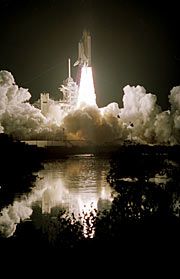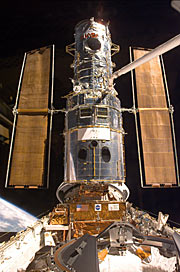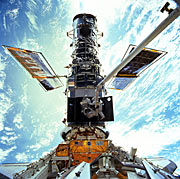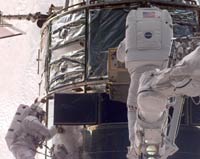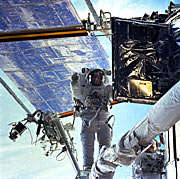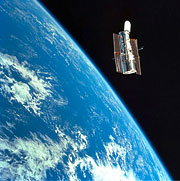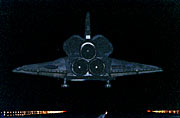Servicing Mission 3A
|
Scheduled for June 2000, the third mission to the Hubble Space Telescope was originally planned to carry out preventive repairs. However, urgency to address the failure of Hubble’s third gyroscope led NASA managers to split SM3 into two parts (SM3A and SM3B), scheduling an early servicing mission (SM3A) for December 1999. The unexpected failure of the fourth of Hubble’s six gyroscopes on 13 November 1999, with SM3A already planned, caused NASA to place Hubble into safe mode. Unable to conduct science without at least three working gyros, Hubble went into a sort of protective hibernation until 19 December 1999, when a crew of astronauts aboard the Discovery Space Shuttle flew to its rescue and replaced all the gyroscopes. Since the second Servicing Mission in February 1997, three of the gyroscopes had failed and caused some concern among NASA officials. Additionally, NASA deemed necessary the replacement of one of Hubble’s three Fine Guidance Sensors (FGS). Both devices are part of Hubble’s advanced pointing control system, and as such, they keep the telescope steady during observations. During the 8-day flight, astronauts conducted several other crucial servicing and upgrading tasks, which involved the installation of several other instruments:
Led by Servicing Mission veterans Steven Smith and Michael Foale, the seven-member crew aboard the Discovery Space Shuttle (STS-103) left for outer space on 19 December 1999. Working in pairs on four alternating days, the astronauts staged three space-walks and renewed the observatory. After preliminary tests had shown that all systems - new as well as old - were performing perfectly, Hubble was released with the Shuttle’s robotic arm. This was followed by Discovery backing slowly away from the telescope. Upon successful equipment replacement and maintenance upgrades of Hubble, the astronauts used their remaining time in space to stow equipment away as well as making other preparations before embarking on the journey back to Earth. On 27 December 1999, performing a smoothly night-time landing, Discovery touched down on the runway at the Kennedy Space Center in the United States. During the mission, the Discovery Space Shuttle circled the Earth 119 times and travelled more than 5 million kilometres. Among the 7-member crew was ESA’s Claude Nicollier, who staged the mission’s second spacewalk accompanied by NASA’s Michael Foale. While awaiting the next servicing mission (SM3B) scheduled in March 2002, Hubble was ready for further scientific observations and new discoveries. Links
|
The long-awaited launch of Discovery from Cape Canaveral marking the beginning of Servicing Mission 3A. Hubble has just been "grappled" by ESA astronaut Jean-François Clervoy. It is now being put on the "berthing platform" which has been specially constructed to accommodate the telescope during the repairs. Payload commander Steven Smith and mission specialist John Grunsfeld installing Hubble's new gyroscopes.
During the second spacewalk Claude Nicollier, ESA, (right) is inserting the Fine Guidance Sensor into Hubble. Michael Foale (left) is assisting. John Grunsfeld is preparing to insert the new radio transmitter in one of Hubble's bays. Discovery slowly backs away from Hubble after the release. Discovery's night-time landing also went smoothly. |
